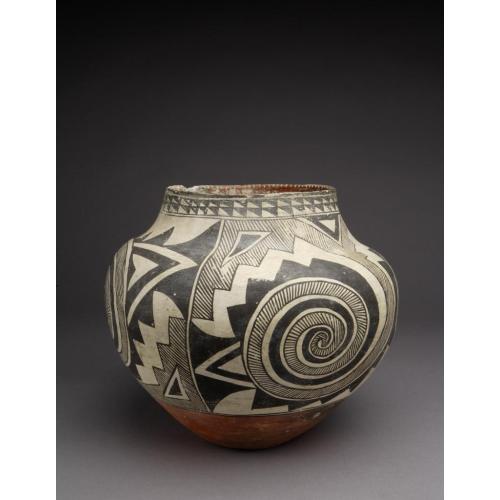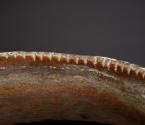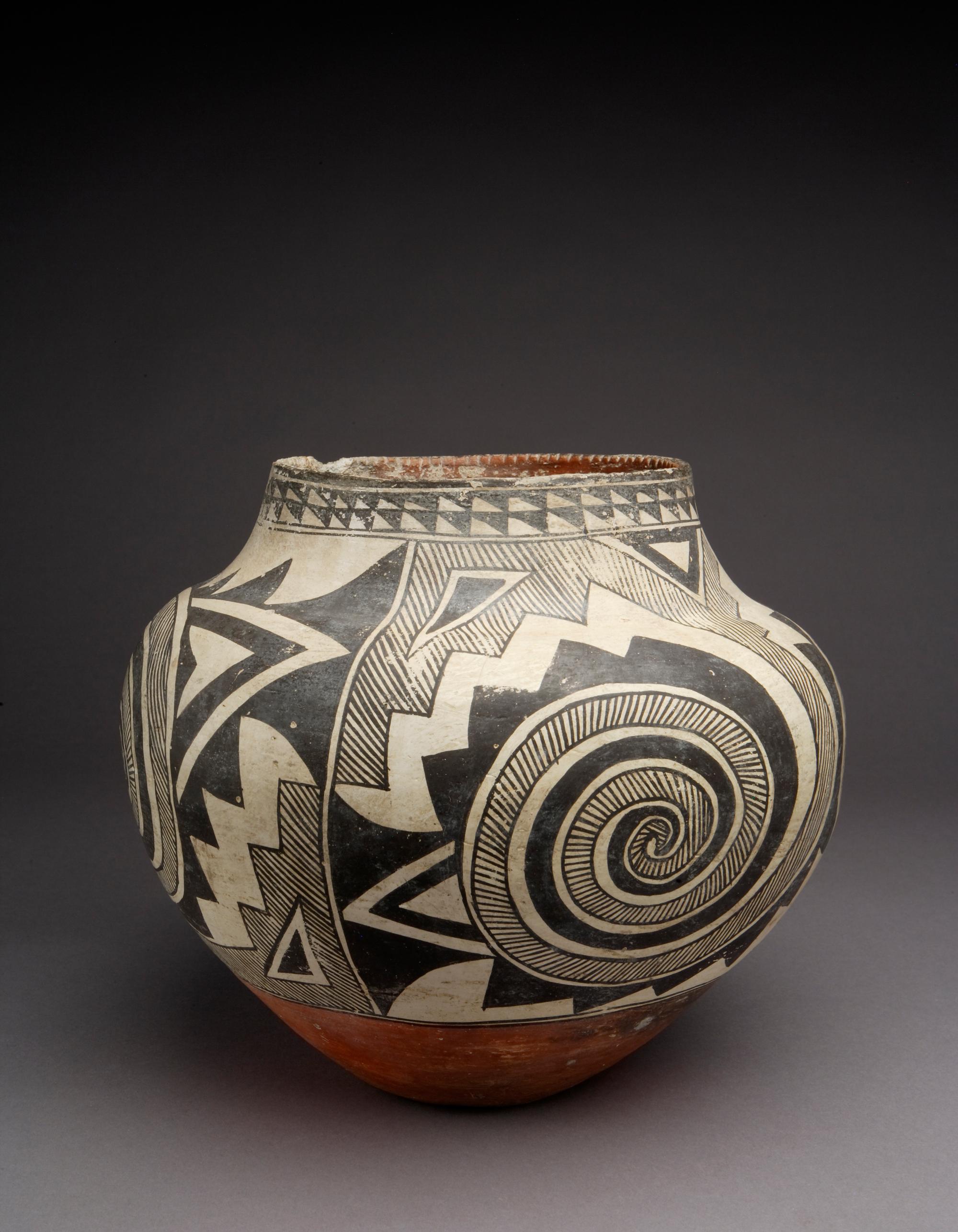
Photograph by Addison Doty. Copyright 2011 School for Advanced Research.
Water jar
Date: 1900-1910
Artist or Maker: Unknown
Dimensions:
Dimensions: 27.9 × 31.8 cm (11 × 12 1/2 in.)
Weight: 2.5 kg (5.6 lb.)
Medium: clay | paints
Credit Line: Indian Arts Fund purchase for the permanent collection, 1923.
Place Made:
Valencia, Cibola, Bernalillo, and Sandoval Counties, New Mexico, Southwest, United States, North America
Object Number: IAF.45
Not on view
Tribal Collection Review RemarksAccording to the participants in the Acoma collection review visit April 22-24, 2015 (Events Record “Collection Review: Acoma Pueblo, Review 1”): This jar has features of Acoma clay, such as pitting and ground sherds used as temper, as well as other materials used on Acoma pottery, therefore the participants believe this is an Acoma jar. Acoma pottery is known to pit due to the make-up of the clay sourced at Acoma Pueblo and the inclusion of ground pottery sherds in the clay for temper. Very fine sand/silt from arroyos may also have been used for temper in place of ground pottery sherds. Usually larger pots require more temper.
*Pitting may be caused by lime or calcium carbonate deposits within the clay.
The notches on the interior of the mouth (rim) of the jar are an invitation for water to come into the jar. The shape of the pot and the notches on the interior of the mouth indicate that this is a water jar. The designs, which are typical of Acoma, depict rain (hachured areas), clouds (solid black areas), and the sun (orange). Usually the bases of Acoma pots and interior rim are orange or red. The paints/slips used are also characteristic of Acoma. Paints/slips used on Acoma pottery are sourced around Acoma. Paints/slips on older jars will look different from those on more recent ones. There is a line break at the bottom which may indicate that it was used for ceremonial purposes.
According to the participants in the Acoma collection review visit February 26-27, 2019 (Events Record “Collection Review: Acoma Pueblo Review 12”): The shape of a water jar is characterized by usually having a concave base (can also have a flat base) leading to a wider body and shoulder area. The shoulder, which is typically rounded but can also be sharp, leads inward and up to the neck and opening of the water jar. Historic water jars will sometimes have an indentation from the base the pot was built on (also known as a puki).
Water jars of all sizes are made and used. Medium to small size water jars are more commonly used to carry water as the weight of a filled water jar can become quite heavy. Large sized water jars would be used for storing water. Today at Acoma, water jars are still being used and made in both traditional natural and commercial materials.
In Collection(s)
Bibliography:
The Pottery of Acoma Pueblo
- Pg. 267
- Fig. 16.8
The Indian Arts Research Center, in collaboration with Native American community scholars, strives to present accurate collections records. Records may be updated as new information becomes available and is reviewed with the Native American community having cultural affinity to particular items. Please write to iarc@sarsf.org if you have questions or concerns related to the documentation.


